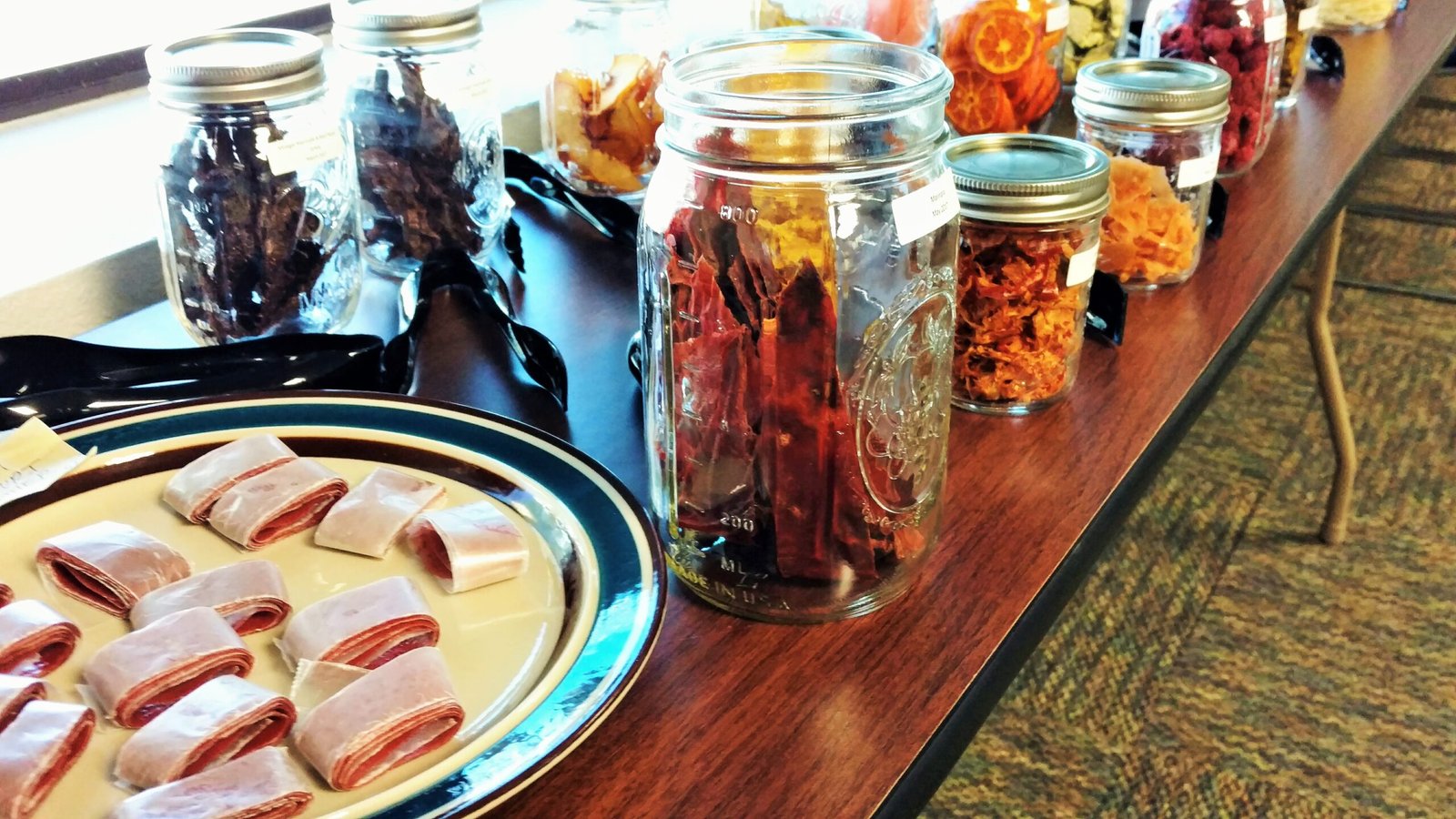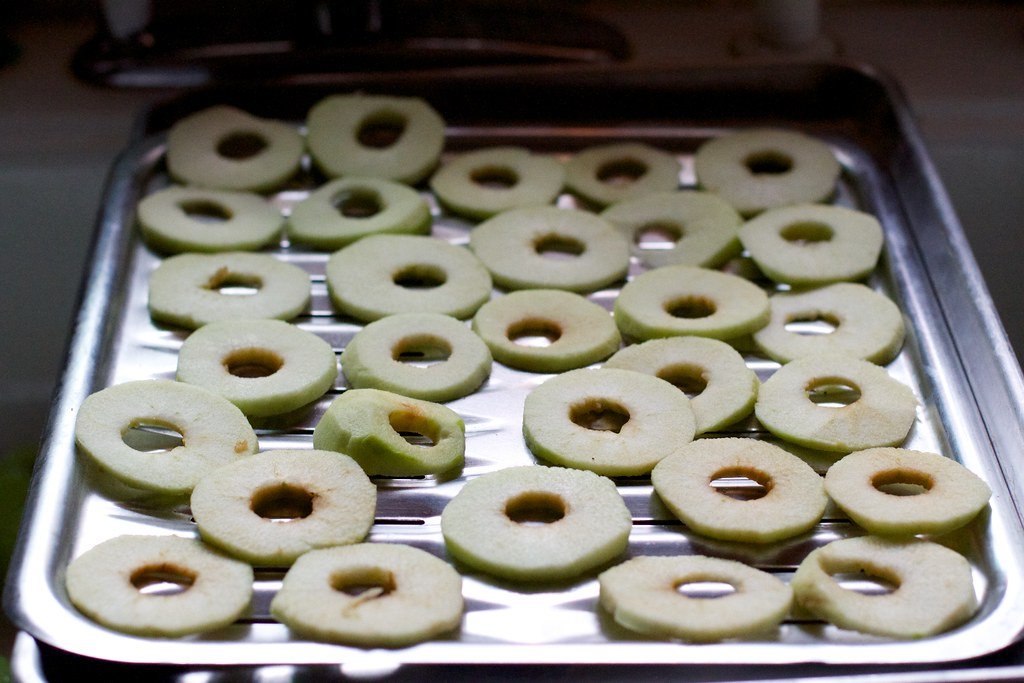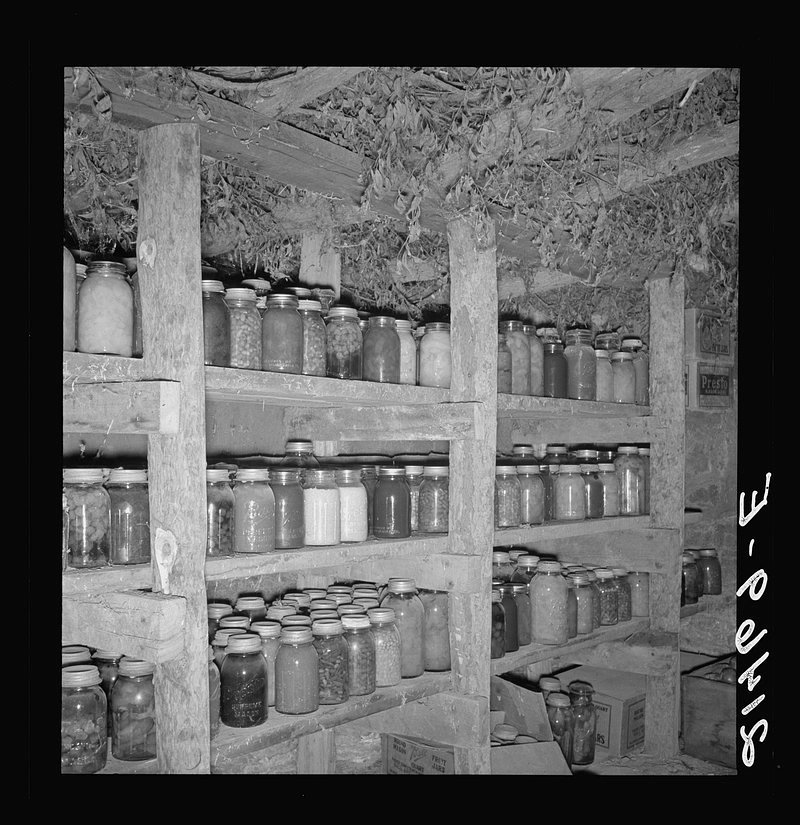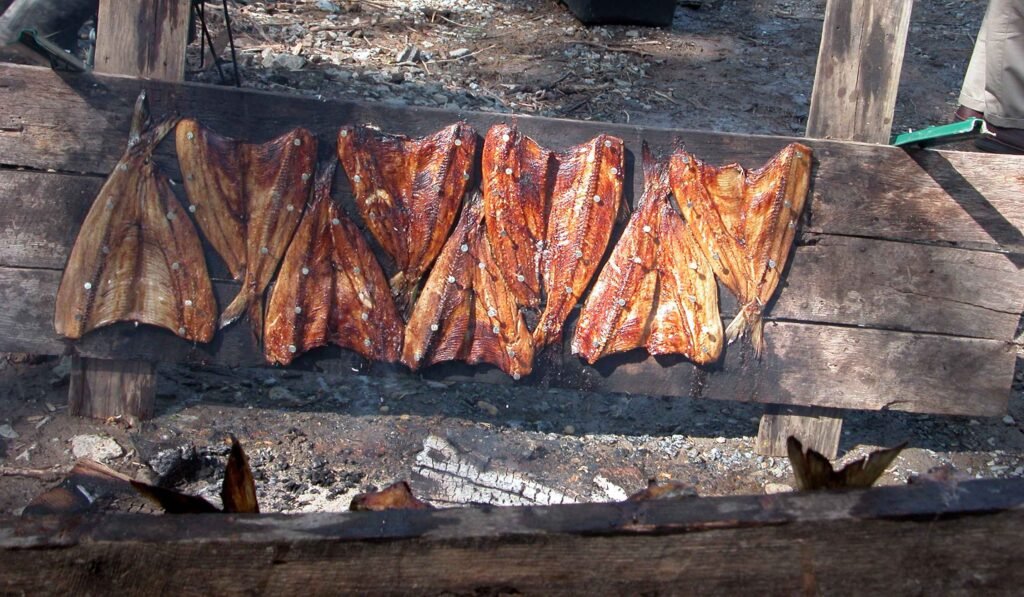Now Reading: How to Make Your Own Dehydrated Foods
-
01
How to Make Your Own Dehydrated Foods

How to Make Your Own Dehydrated Foods
Have you ever dreamt of capturing the essence of sunshine and deliciousness all in one bite? Well, look no further! Welcome to the world of dehydrated foods, where your culinary imagination meets preservation wizardry. Whether you’re a camping enthusiast, a health-conscious foodie, or simply a connoisseur of homemade treats, learning how to make your own dehydrated foods will revolutionize your kitchen adventures. So, put on your apron, grab your favorite fruits and vegetables, and let’s embark on a dehydrating journey like no other. Get ready to savor the taste of nature’s bounty while preserving its vibrancy and flavors with simplicity and style.
Table of Contents
- Choose the Right Food to Dehydrate
- Prepare and Slice the Food for Optimal Dehydration
- Utilize Different Methods for Dehydrating Foods
- Store Your Dehydrated Foods Properly
- Experiment with Recipes and Enjoy the Fruits of Your Labor
- Q&A
- Insights and Conclusions

Choose the Right Food to Dehydrate
When it comes to dehydrating food, not all ingredients are created equal. To get the most out of your food dehydrator, it’s important to choose the right foods that will yield the best results. Here are a few factors to consider:
- Water Content: Foods with high water content take longer to dehydrate and may not dry evenly. It’s best to opt for fruits and vegetables that have a lower water content, such as apples, bananas, carrots, and mushrooms.
- Texture: The texture of a food can greatly impact its success in the dehydrator. Foods that are crisp, like celery or snap peas, tend to dehydrate well. On the other hand, foods that are high in fat, like avocados or fatty meats, don’t dehydrate as effectively.
- Nutritional Value: Consider choosing foods that retain their nutritional value even after dehydration. Spinach, kale, and berries are all excellent choices, as they maintain their vitamins and minerals throughout the drying process.
Remember, experimenting with different foods can be a fun and rewarding experience. Don’t be afraid to try new things and discover your own dehydrating favorites!

Prepare and Slice the Food for Optimal Dehydration
When it comes to dehydrating food, proper preparation and slicing are key to achieving optimal results. By following these steps, you can ensure that your dehydrated foods retain their flavor, nutrients, and texture.
- Choose fresh, ripe produce: Start with high-quality fruits and vegetables. Look for produce that is firm, with vibrant colors and no signs of spoilage. This will guarantee the best final product.
- Wash and dry: Give your produce a good rinse under cold water to remove any dirt or debris. Pat them dry with a clean kitchen towel or paper towels before slicing. This step avoids diluting the flavors of the food and prevents bacteria growth.
- Slice consistently: To achieve uniform drying, slice your food items into pieces of similar thickness. Aim for slices that are about ¼ to ⅛ inch thick, depending on the food you are dehydrating. Uniformity ensures that each piece dries at an even rate.
- Consider blanching: While not essential for all foods, blanching certain vegetables, like broccoli or green beans, can help preserve their color and nutrients. Blanching involves boiling the vegetables briefly, then plunging them into cold water to halt the cooking process.
Remember, preparing and slicing your food properly before dehydration is essential for maintaining its quality and optimizing the drying process. Taking the time to handle your ingredients with care will reward you with delicious and nutritious dehydrated snacks and ingredients!

Utilize Different Methods for Dehydrating Foods
When it comes to preserving food, dehydration is an excellent method that helps retain flavor and nutrition while extending the shelf life. The great thing about dehydrating foods is that there are various techniques you can use, depending on your preferences and the type of food you are working with. Let’s explore some of these methods:
- Sun drying: The oldest and most natural method of dehydration, sun drying involves placing the food under direct sunlight. It’s an incredibly cost-effective method and works well for fruits, vegetables, and herbs. However, keep in mind that this process can take several days and is highly dependent on sunny weather.
- Oven drying: Using your oven is a convenient way to dehydrate food, especially during colder months or when sunlight is limited. Set your oven to a low temperature (around 140°F or 60°C) and spread your sliced fruits, vegetables, or meat on a baking sheet. Keep the oven door slightly open to allow moisture to escape. Check the progress regularly to ensure proper dehydration.
- Dehydrator: Investing in a food dehydrator is a practical choice for those who frequently preserve food. These appliances have adjustable temperature settings and trays that allow effective dehydration. Simply place your sliced or chopped food onto the trays, set the desired temperature, and let the dehydrator do its magic. They are a breeze to use and offer consistent results.
With these different methods at your disposal, you can experiment and find the one that suits your needs best. Whether you enjoy the traditional approach of sun drying or prefer the convenience of an oven or dehydrator, dehydrated foods are a fantastic way to enjoy the flavors of the season all year round!
Store Your Dehydrated Foods Properly
When it comes to preserving and storing your dehydrated foods, proper storage is essential to ensure longevity and maintain their quality. Follow these tips to make the most out of your dehydrated goods:
- Choose the right container: Opt for airtight containers or vacuum-sealed bags to keep moisture and oxygen out, preventing spoilage and degradation.
- Maintain a cool and dry environment: Heat and humidity are enemies of dehydrated foods, causing them to spoil quickly. Keep your stored items in a cool, dry location to extend their shelf life.
- Label and date your containers: Writing the date of storage on your containers will help you keep track of their freshness and ensure that older items get used first.
- Consider using oxygen absorbers: These small packets absorb any remaining oxygen in the container, further prolonging the shelf life of your dehydrated foods.
- Rotate your stock: To avoid wastage, implement a “first in, first out” system. Use older items before newer ones to ensure that nothing goes to waste.
By following these storage guidelines, you can enjoy the benefits of your dehydrated foods for an extended period, allowing you to savor their delicious flavors and reap their nutritional value whenever you desire.
Experiment with Recipes and Enjoy the Fruits of Your Labor
Are you tired of cooking the same old meals every day? It’s time to break free from your culinary routine and unleash your creativity in the kitchen! Experimenting with recipes is not only a fun and engaging way to spend your time, but it also allows you to discover new flavors and techniques.
One of the best things about experimenting with recipes is the satisfaction you’ll feel when you finally taste the fruits of your labor. Whether it’s a perfectly baked cake, a mouthwatering lasagna, or a refreshing and exotic cocktail, the joy of knowing that you created something delicious from scratch is unmatched.
To make the most of your recipe experiments, consider keeping a journal or diary where you can jot down your ideas, modifications, and notes about each dish you try. This way, you can document your culinary adventures and track your progress as you become more confident in the kitchen.
Remember, the world of cooking is vast and full of endless possibilities. Don’t be afraid to think outside the box and mix ingredients you never thought would go together. Boldly embrace the unexpected! A dash of cinnamon in your savory dishes or a sprinkle of sea salt in your desserts might just be the secret ingredient that takes your recipe to the next level.
So, put on your apron and let your imagination run wild. Dive into the world of recipe experimentation and uncover the hidden treasures that await you in the realm of flavors. Your taste buds will thank you!
Q&A
Q: Why would I want to make my own dehydrated foods?
A: Making your own dehydrated foods allows you to preserve and enjoy seasonal produce all year round. Plus, it’s a budget-friendly way to stock up on nutritious snacks without any added preservatives.
Q: What equipment do I need to start dehydrating foods?
A: All you need is a good quality dehydrator, which helps remove moisture from your food while preserving its nutrients. An alternative would be to use your oven on low heat, but a dehydrator offers better control and airflow.
Q: Can I dehydrate any type of food?
A: Almost! Fruits, vegetables, herbs, meats, and even dairy can be dehydrated. However, it’s important to note that some foods may require blanching or pre-treatment before dehydrating, while others may not be suitable due to their high water content.
Q: How do I prepare food for dehydration?
A: Start by washing, peeling (if necessary), and slicing your food into even pieces. Thinner slices or smaller chunks dehydrate faster. For fruits prone to browning, a quick dip in lemon juice can help preserve their natural color.
Q: How long does the dehydration process take?
A: The time required depends on factors like the food’s water content, thickness, and the dehydrator’s temperature setting. Typically, it can take anywhere from a few hours to a couple of days. Just be patient and periodically check your food for doneness.
Q: How do I know if my food is fully dehydrated?
A: Dehydrated foods should be dry, with no moisture remaining. Fruits and vegetables should be leathery or slightly brittle, while meats should be firm and no longer sticky. It’s always better to err on the side of over-drying rather than under-drying.
Q: How should I store my dehydrated foods?
A: Once your food is completely dry, let it cool down before storing it in airtight containers, like glass jars or vacuum-sealed bags. Keep your dehydrated goodies in a cool, dark place away from moisture and sunlight for maximum shelf-life.
Q: How long can I store my dehydrated foods?
A: When stored properly, most dehydrated foods can last anywhere from several months to a year or more. However, it’s a good idea to regularly check for signs of spoilage, such as off odors or mold growth, to ensure the safety of your stored food.
Q: What are some creative ways to use dehydrated foods?
A: Get imaginative with your dehydrated goodies! Use dried fruits in trail mixes, granolas, or homemade fruit leather. Sprinkle vegetable powders on soups, stews, or pasta dishes for an added burst of flavor. The possibilities are endless!
Q: Any final tips or tricks for successful food dehydration?
A: Patience is key! Don’t rush the process, as it’s better to dehydrate slowly and thoroughly. Also, label your containers with the date and contents to keep track of freshness. Experiment with different flavors and combinations to find your favorite dehydrated treats.
Insights and Conclusions
And there you have it, a delectable journey into the world of DIY dehydrated foods! Armed with the knowledge gained from this article, you are now equipped to embark on your own culinary adventure.
Imagine the satisfaction of sinking your teeth into a crispy slice of homemade beef jerky or relishing the burst of flavor from a handful of zesty dried mangoes. With your culinary prowess, you can proudly showcase an array of dehydrated goodies that will make your friends envious.
Remember, the process of dehydrating food opens up a realm of possibilities, where creativity knows no bounds. Experiment with different fruits, veggies, meats, and even herbs to concoct unique flavor combinations that tantalize your taste buds like never before.
As you embark on this journey, take a moment to appreciate the simplicity and sustainability of this preservation technique. By preserving your own food, you reduce waste and minimize your carbon footprint, contributing to a greener and more eco-friendly lifestyle.
So, arm yourself with a trusty dehydrator or simply use your oven, and let the magic unfold. Embrace the transformation of fresh produce into vibrant, lightweight, and shelf-stable delights. Welcome the opportunity to preserve nature’s bounty and relish the fruits of your labor for months to come.
Whether you’re an outdoor enthusiast seeking nutritious snacks for your adventures or you simply want to add a touch of homemade goodness to your pantry, making your own dehydrated foods is an art worth exploring. So go forth, fellow culinary adventurers, and may your dehydrated creations bring joy and flavor to every palate they touch. Bon appétit!
As an affiliate, my content may feature links to products I personally use and recommend. By taking action, like subscribing or making a purchase, you’ll be supporting my work and fueling my taco cravings at the same time. Win-win, right?
Want to read more? Check out our Affiliate Disclosure page.





